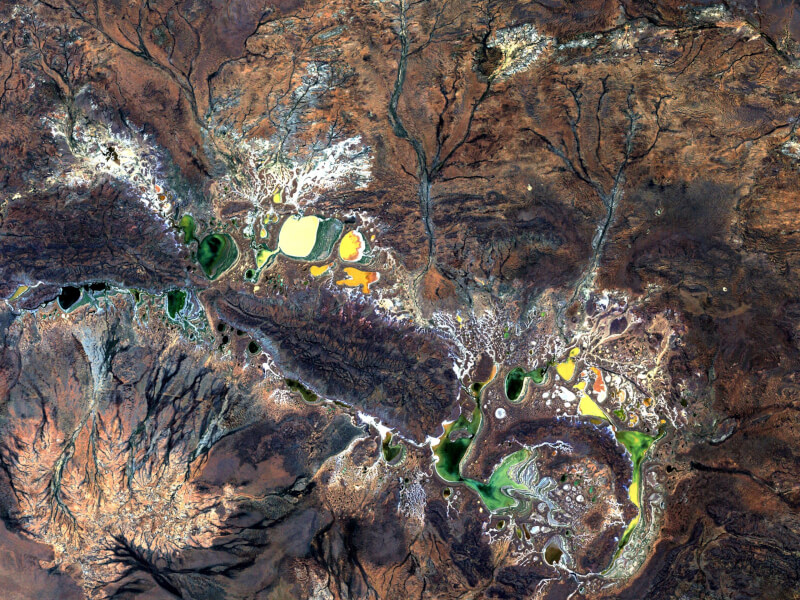08 September 2023 – In the last few months events have occurred globally which indicate an astonishing, but not unexpected, acceleration in the pace of climate change. The world has now entered a new era of extremely dangerous climate impacts which are already proving catastrophic in many parts of the world. The factors which hitherto have constrained warming, such as the inertia of the climate system and the cooling effect of atmospheric aerosols, are fading, pushing the global climate system into uncharted territory.
This dire situation is made even more dangerous by the fact that political and business leaders, having collectively decided to preserve the status quo, do not want to understand the implications, despite having had access for years to the best possible scientific advice.
The serial climate deniers of the fossil fuel industry; companies such as Shell, Exxon Mobil, BP and Glencore internationally and Woodside, Santos and Whitehaven in Australia, have used the excuse of the Ukraine war and energy security to reverse their already meagre commitments to climate action and press for oil and gas expansion, using a fog of scenarios to pretend otherwise.
Politically, Western leaders obsess with conventional geopolitics, obviously the Ukraine war, but particularly the supposed China threat to US supremacy, oblivious to the fact that climate change is a far greater threat to all nations. The communique from the recent AUSMIN meeting, issued by Ministers Penny Wong and Richard Marles along with US Secretaries of State and Defence Anthony Blinken and Lloyd Austin, is a case in point. It assures citizens that the principals are “committed to mitigating the existential threat posed by climate change — and to the shared goal of keeping a global average temperature of 1.5oC within reach.” They reiterate “their unwavering support for the Pacific (nations) in dealing with the impacts of climate change”. But in their real worldview, climate plays second fiddle to escalating militarisation and geopolitical domination. Priorities which, in themselves, are massive emission generators, around 5.5% of the global total, even before actual warfighting is included. To avoid constraining military activities, the US ensured years ago that military emissions are not included in global emission accounting conventions.
In lockstep, the mainstream media sensationalise war, the climate disaster stories of fires, floods and storms, yet refuse point blank to discuss the policies and actions required to address the accelerating climate threat.
So as an aide memoire to those leaders who continue to deliberately ignore the laws of physics, here is a brief summary of the climate reality we now face, and its policy implications:
- 1.5oC global average temperature increase relative to pre-industrial conditions, the lower limit of the Paris Climate Agreement, will occur prior to 2030, irrespective of any action taken in the interim.
- The upper limit, 2oC, is now likely prior to 2050, even with actions better than the current Paris commitments.
- The war in Ukraine and the US/China standoff over Taiwan, unless rapidly resolved, will bring forward these outcomes, leading to global temperature increase above 30C well before 2100.
- Rapid emission reductions will have no significant impact on the warming trend over the next 25 years due to the offsetting effect of reducing aerosols from fossil fuel consumption, which have been cooling the planet thus far – the “Faustian bargain” of fossil fuel use. This warming, possibly an additional 10C, will have to be adapted to where possible.
- “Hothouse Earth”, non-linear, irreversible, self-sustaining warming may be triggered between 1.5 – 2.0oC. There is evidence that five climate system tipping points may have already moved beyond human influence, with catastrophic and irreversible implications even in the short-term.
- Current global warming, 1.2oC in 2022, is already dangerous. 2oC would be extremely dangerous, 3oC would be catastrophic. These are global averages. Land temperature increases will be far greater.
The practical and policy implications are as follows:
- It is now impossible to limit temperature increases to 1.5oC. Also to 2oC unless global leaders halt current conflicts and take emergency action to address climate change.
- The wide-spread net zero emissions by 2050 (NZE 2050) target is totally inadequate. The objective must be to reach zero emissions as close to 2030 as possible (ZE 2030). A massive task, far greater than anything thus far contemplated officially.
- Any government’s first priority should be the security and prosperity of its people. Climate change, not China, has long been our greatest threat. Australia, along with our region, is far more exposed to climate risk than most. Historic inaction means the threat has become immediate.
- Climate impacts in Australia will be noticeably higher than global statistics imply – Australia’s average temperature in 2020 was already 1.47oC above 1910 levels, roughly 1.5oC above pre-industrial levels, in a non-El Nino year. El Nino conditions will be extremely dangerous.
- Experts, for years, have warned of the dangers of increasing carbon emissions and atmospheric carbon concentrations. The implications have been masked by inertia in the climate system and by aerosol cooling from fossil fuel use. As oceans have warmed and aerosols reduced, these masks are being removed. As a consequence we face abrupt, non-linear, climate change which must be addressed as an emergency now.
- The absolute priority must be to reduce carbon emissions extremely rapidly by cutting fossil fuel use. The big emitters, countries or companies, must take the brunt of the cuts. Other initiatives, from technology, communities, agricultural ocean and reforestation sequestration offsets, etc are very important, but will not achieve the required reductions in the limited time available.
- The immediate challenge is to prevent matters becoming far worse, particularly by expanding the use of fossil fuels, whether domestic or export. Coal and gas expansion, currently being approved in Australia and elsewhere, is utterly irresponsible, and unnecessary given more attractive alternatives are available. Short term energy security insurance should be provided by a gas reservation policy.
- In addition to rapid emission reduction, atmospheric carbon concentrations must be drawn down from the present level of 420 ppm CO2, toward a more stable level of below 350 ppm CO2. The technology to achieve that drawdown is in its infancy, further compounding the risks.
- Geoengineering will be essential to buy time, by cooling areas of the planet, before other initiatives take effect.
- An emergency implies acting early rather than later, otherwise as we are seeing, mitigation becomes secondary to adaptation as incumbencies throw their resources at managing symptoms, the climate impacts, or shoring up the status quo, rather than addressing the underlying climate change cause. This is leading into a “death spiral”, toward societal collapse, as climate impacts escalate unconstrained, the beginnings of which are already apparent.
The world is obviously a long way from any commitment to ZE 2030, but that is what an objective assessment of the science and evidence requires. Climate change is now an immediate existential threat to civilisation as we know it, an outcome being locked-in today, which demands a complete reframing of global climate and energy policies to achieve that target. This is the context against which every action by governments, institutions and business globally must be tested henceforth.
Including misleading official rhetoric, aka AUSMIN. Stop pretending 1.5oC is still achievable. Rather than condescending weasel words for the Pacific nations, acknowledge if we really are “family”, that they face an immediate catastrophic future and that our geopolitical sabre-rattling is making matters worse. Instead of obscene contortions to “prove” the Great Barrier Reef is not on the “endangered list”, accept that it is in extreme danger, probably facing extinction along with other coral reefs globally. Above all, act to get emissions down fast, military included, as the existential threat is real.
Addressing climate change realistically requires national and international mobilisation akin to wartime. It will mean economic disruption and massive social and political change, but that is essential if the vested interest barriers to action, which created this emergency, are to be broken. The alternative, of escalating climate impacts and self-sustaining warming, will be far worse.
This requires leadership of an entirely different calibre from anything currently evident, to honestly articulate these threats and chart the way forward to avoid them. Leaders with the vision, maturity and morality to pursue global cooperation rather than conflict, militarisation and fossil fuel expansion.
In stark contrast, at the recent ALP national conference, the Prime Minister made it abundantly clear that the government’s primary objective is not leadership and the public interest, but re-election in 2025. Until then, the obsession with AUKUS and the China “threat” will dominate politics, with realistic climate policy yet again swept under the carpet. This means no serious climate action until at least 2026, with massive fossil fuel expansion in the interim.
As former UK Chief Scientist, Sir David King, emphasised in 2021 “What we do (on climate action) in the next 3-5 years will determine the future of humanity”. In 2023, accelerating climate impacts prove him right.
The two main Australian political parties, in government and opposition, have clearly demonstrated they are both incapable and unwilling to address the greatest threat facing the nation in the short time available. Independents and most of the minor parties push hard for action to fill the policy vacuum, but it is not enough.
Mass community pressure is needed now to support them in breaking this suicidal impasse, create genuine leaders prepared to act in the public interest and to seize the opportunity for Australia to take global leadership in promoting international climate mobilisation.
First published in Pearls and Irritations






